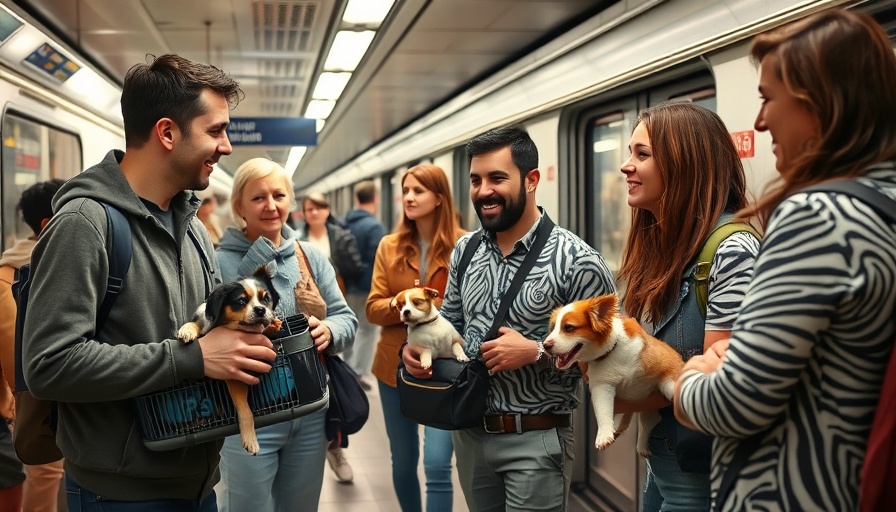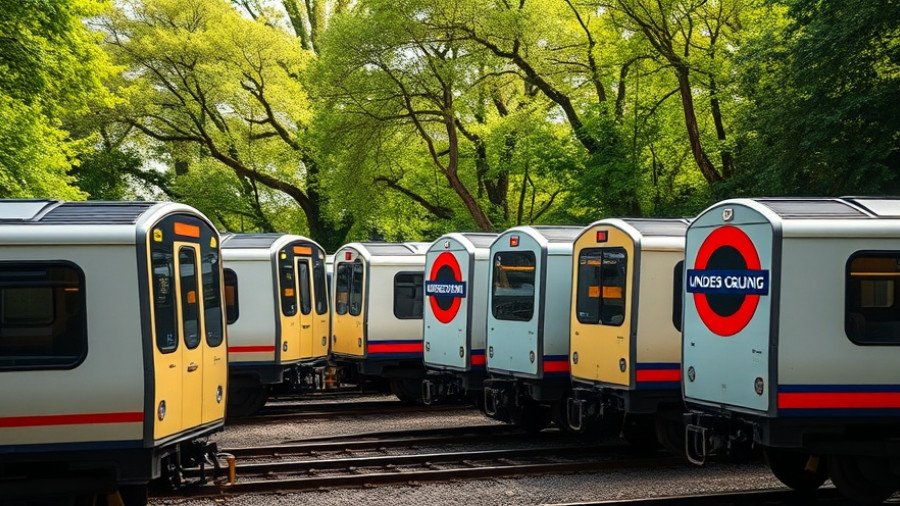
Public Outcry Over TfL's Controversial Cat Promotion
The recent video released by Transport for London (TfL) is sparking heated debate across the capital. Intended to promote pet-friendly travel on the London Underground, the video features cats taken into the bustling environment of trains and crowded stations, which many—including the prominent animal welfare charity, Cats Protection—deem inappropriate and potentially harmful.
Animal Welfare Groups Raise Concerns
Cats Protection has been vocal in their opposition, articulating concerns that exposing cats to the chaotic atmosphere of the Tube could cause them significant stress. Jeff Knott, Cats Protection’s Advocacy Director, expressed disbelief over TfL’s refusal to remove the video despite these concerns. He noted that prioritizing social media engagement over animal welfare is troubling, emphasizing that cats thrive in peaceful, familiar settings.
A Closer Look at the Video's Impact
Since its posting, the TfL video has amassed over 134,000 views, igniting a flurry of reactions online. While some viewers praised it as a fun and engaging idea, others highlighted the potential risks. One commenter articulated a common sentiment: “99 percent of cats would find this incredibly stressful.” This divergence in viewpoints underscores a critical need to balance marketing with responsible animal care practices.
Understanding Cats' Natural Behaviors
According to experts, cats are inherently territorial animals and taking them out of their comfort zone—especially into loud and crowded spaces like those found in the London Underground—could lead to significant behavioral issues. Animals in new environments can experience heightened anxiety, making them more prone to stress-induced reactions. Veterinary officer Sarah Elliott warns that using harnesses can restrict a cat's natural instincts and even inhibit their flight response.
Transport Protocols: Are They Enough?
The TfL Conditions of Carriage currently allow the transport of animals on public transport under certain conditions. However, the vague guidelines leave room for interpretation, prompting concerns. Cats Protection suggests that these regulations should be revisited to better ensure the safety and welfare of pets, positioning their overall advocacy for more rigorous standards in animal transport.
Future Discussions for Better Pet Care
In light of these events, Cats Protection plans to approach members of the London Assembly to seek a more substantial discussion on animal welfare guidelines within TfL. This proactive approach could potentially chart a new course for pet travel in urban settings, where safety and comfort should take precedence over casual enjoyment.
Embracing Community Voices
This dispute shines a light on a deeper issue of community engagement—how local organizations and transit authorities must work together to ensure that all voices are heard when it comes to public policy, especially regarding pet welfare in bustling cities. As urban living becomes more pet-inclusive, the conversation around responsible pet ownership and transport options must evolve.
Conclusion: A Call For Responsible Pet Ownership
As city living intertwines with pet ownership, it's essential to advocate for the welfare of our furry friends. Understanding their needs and ensuring safe transport should remain paramount. If you’re a pet owner, consider how you can prioritize your animal's comfort and happiness in all environments. Join discussions, stay informed, and advocate for measures that support caring for your pets in a busy world.
 Add Row
Add Row  Add
Add 




Write A Comment